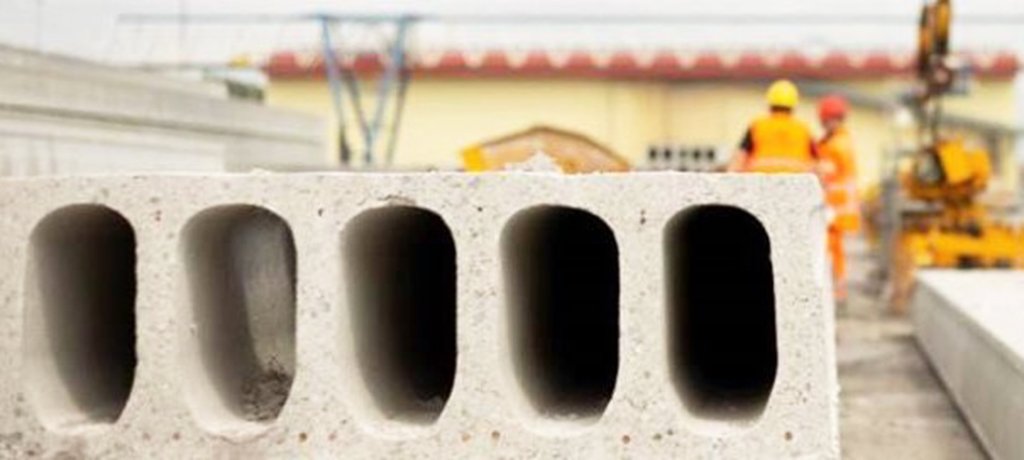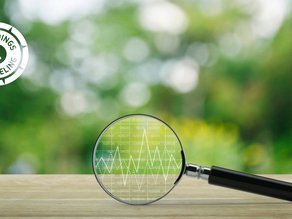Featured, category-1 environmental statement: VBI slab floor PV A200
Every month we highlight a category 1 product to stimulate the development of these environmental delcarations in the National Environmental Database. The VBI hollowcore slab floor PV A200 is in the spotlight this month

Every month we highlight a category 1 product to stimulate the development of these environmental declarations in the National Environmental Database. The VBI hollowcore slab floor PV A200 is in the spotlight this month
Description
1 m2 self-supporting hollowcore slab floor, including reinforcement and joint filling, that complies with the Dutch Building Decree, has a minimum lifespan of 100 years and is produced for use in the Netherlands.
| Environmental declaration owner: | VBI Ontwikkeling BV |
| Product components: | VBI hollowcore slab floor PV A200 |
| Functional unit (FU): | square metre |
| Lifespan: | 100 years |
| ECI per FU: | 3,238 |
| Scalable: | yes |
The National Environmental Database distinguishes three environmental declaration categories:
- Category 1: proprietary data from manufacturers and suppliers
- Category 2: non-proprietary data from groups of manufacturers and/or suppliers and sectors
- Category 3: non-proprietary data from Stichting National Environmental Database
Each month we put a National Environmental Database category 1 environmental declaration product in the spotlight. This environmental declaration can be viewed using the NMD Viewer.
What does VBI do?
VBI produces prefab flooring systems based on insulated and uninsulated hollowcore slab flooring. The range also includes PS Insulation Floors, Combination Floors, PS Renovation Floors, Pipe and Apartment Floors and Climate Floors.
What was the reason to include your product in the NMD as a category 1 environmental declaration?
The flooring choice largely determines a building’s environmental impact. As VBI aims to build sustainable, flexible and comfortable living and working environments, it’s a natural decision for us to include our low environmental impact products in the National Environmental Database. There are multiple aspects to sustainability, and environmental impact and circularity play a particularly important role at VBI. With respect to circularity, several categories apply: from recycling of materials, reusing parts of the building structure, to the reuse of the building as a whole. Introducing the VBI GreenScore has enabled VBI to make the interplay between different levels of sustainability tangible. The VBI GreenScore system has three different design levels. Design for Flexibility, Design for Reassembly and Design for Recycling. These sustainability steps offer great leverage in preventing waste, reducing primary raw material use and lowering carbon emissions.
In which distinctive project has the product been used?
Work is underway on the energy-neutral new-build of Aeres Hogeschool Almere at the Floriade 2022 site. As this new university of applied sciences is being constructed on one of the main roads to the Floriade site, it forms an important ‘symbol’ during and after the Floriade. The transparent building has five floors and offers space to 900 students and 80 staff. During Floriade, part of the school is used to receive visitors. The flexible building can transform easily from exhibition centre to work and learning environment. The facade is being given a smart skin. Over 3,900 m2 of VBI hollowcore slab flooring of various thicknesses is being used on this project, both insulated and uninsulated.

Aeres Hogeschool (Food, Nature & Urban Green) in Almere (render from BDG Architecten)
Are there plans to further reduce the product’s environmental impact? And if so, with respect to which environmental impact?
VBI will be able to further reduce the environmental shadow price by using such things as new binding agents. VBI offers the option of collecting the hollowcore slab for material recycling and using it as granulate in new floors. Volume percentages of 20, 30 or 50% of the coarse aggregate can be replaced by concrete granulate (in accordance with NEN 8005/CUR recommendation 112). An exciting development is to design buildings so that the supporting structures can be reused at the end of a building’s life. This creates the option of reusing elements as complete building components in a new building that is being developed.
This page has been translated using DeepL



